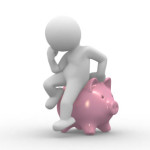There were two items of note this week related to ticket pricing strategies. First up is The Metropolitan Opera (The Met), which released data detailing large losses in the wake of dynamic pricing initiatives that ushered in a wave of price increases.
 Although The Met reversed the decision during Q1 2013, the damage was done and when the fiscal year was complete, they reported average attendance fell to 79 percent capacity, producing a nasty little drop in ticket revenue.
Although The Met reversed the decision during Q1 2013, the damage was done and when the fiscal year was complete, they reported average attendance fell to 79 percent capacity, producing a nasty little drop in ticket revenue.
The second item of note is from the UK where Association of British Orchestras (ABO) reports that even though attendance at orchestra concerts was up 16 percent, earned income was down 11 percent. Although there isn’t enough information from the ABO to know with a reasonable degree of certainty, a good hypothesis to explore is to see if average ticket prices went down during this same period.
If so, it would help explain one of the more frustrating challenges in the field today in that in order to really capitalize on the inherent popularity of live classical music events; you have to acknowledge that ticket prices have exceeded the average ticket buyer’s tolerance threshold.
Simply put, too many orchestras have been artificially pushing ticket prices too high, too fast.
This is a well-traveled topic here at Adaptistration and one of the underlying conclusions throughout those articles is a need to address the challenging reality that in order to reduce ticket prices, groups are going to need to balance the immediate income drop with increases in unearned income.
The only other alternative is to reduce expenses (or a little from Column A and a little from Column B).
It’s a real Catch-22 but at the same time, it’s one of our own making in that the push for increased ticket income made it that much easier to turn a blind eye toward related risks.
But the real silver lining here is what both The Met and ABO appear to have discovered: there is demand and interest out there; they are simply waiting for us to adjust prices.



Being a proponent of demand-based pricing (and having used it successfully in three orchestras), it would be interesting to study what their price and scale-of-hall changes looked like on that first go-around. When done right, DBP can and should bring in incremental revenue increases. Maybe they could release all of that data at an arts marketing conference for study and conversation. It could be titled “When Demand-Based Pricing Goes Wrong!” 🙂
I’d love to see that same report and by and large, I think you’re on target with the amount of confusion that surrounds dynamic pricing. My gripes stem from those who promote it with the finesse and understanding of a snake oil salesman. More often than not, I see it applied in a counterproductive sense.
The other aspect that is often overlooked is sheer technological capacity. Dynamic pricing require a robust box office platform and as it is, the entire field is a good four or five years behind where it should be, technologically speaking, and in order to really benefit from any good dynamic pricing has to offer, you need the capacity to implement.
Dynamic Pricing is all too often code for “massive price increase” with predictable results when randomly applied without “knowing” your market and your product. What exactly are you selling and who precisely is buying it or not as the case may be. Without the data the best you can hope for are small targeted revenue enhancements.
At least here in Scotland ticket prices have remained ridiculously cheap as the recovery for the 2008 meltdown is yet to happen. Seems more likely that average ticket prices would have fallen rather than gone up.
That would have made sense and in some cases, the bottom tier price points did drop but overall, my observation is average ticket prices have increased as a result of pressures to maximize revenue as fast as possible. From a crisis management perspective, that’s a reasonable decision but only if it is temporary and very short term. The expectation is that overall sales will go down but revenue will go up. Of course, you’re only cannibalizing your own core buyers at that point, which is why it can only be a short term solution.
Another wrinkle here is the “greatest art” syndrome in that there is still a strong movement that believes ticket prices are justified because these concerts represent the pinnacle of performing arts. Granted, there will likely be debates on that topic for decades to come but there’s no escaping that it influences ticket price decisions (usually in a negative context).